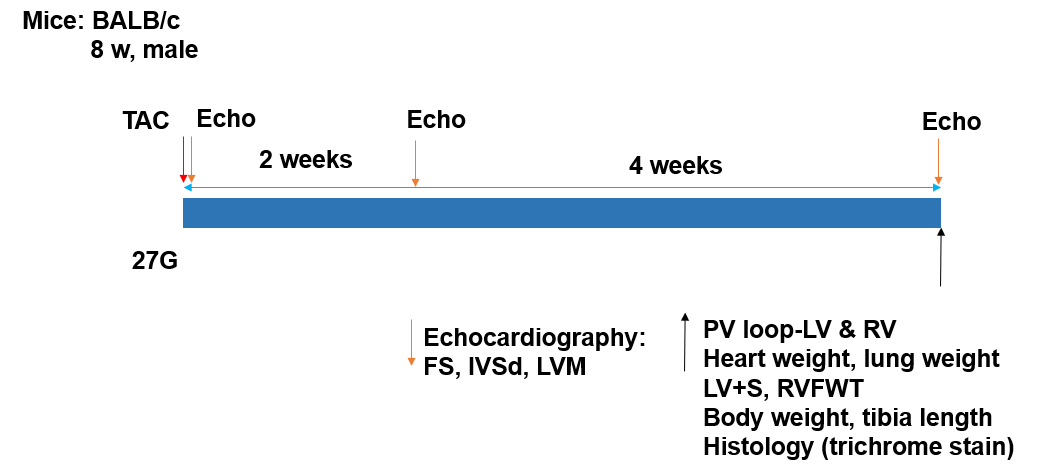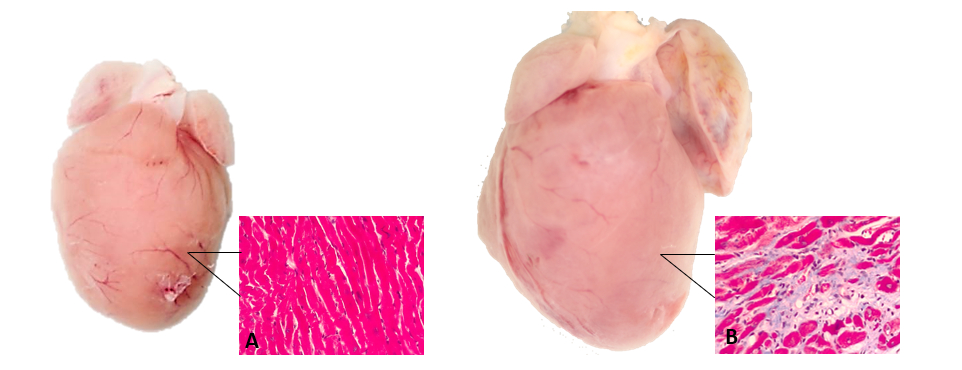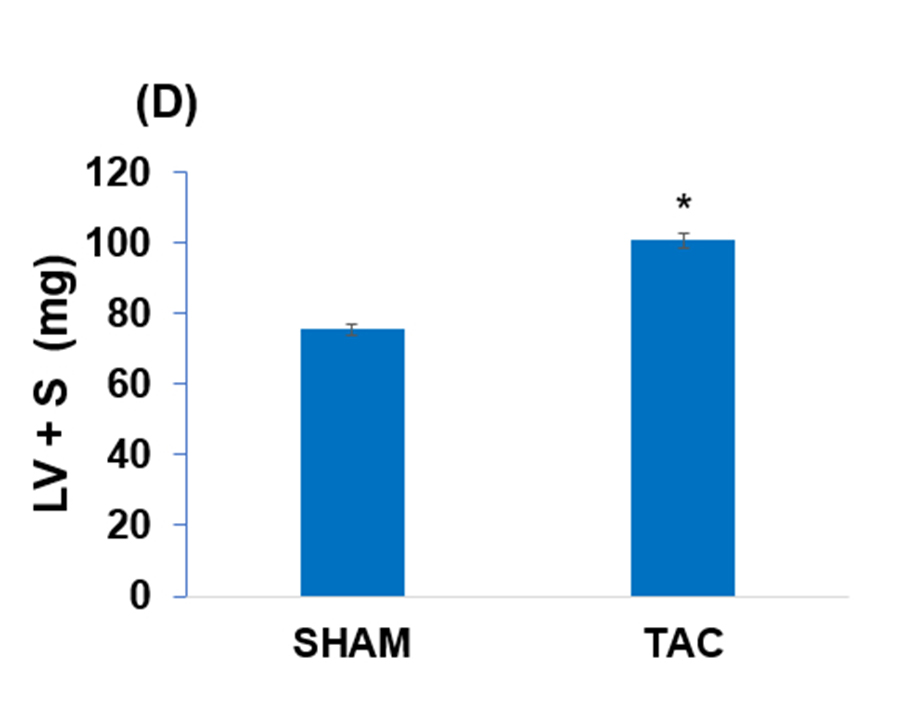Transverse Aortic Constriction (TAC)
Experimental Protocol

The TAC model is induced surgically, and cardiac remodeling is monitored at specific timepoints during the study. A non-invasive echocardiogram is performed at 24 hours, 2 weeks, and 6 weeks post- TAC. A live pressure-volume loop is obtained at 6 weeks followed by final measurements, sample collection, and histology.
Histology

Figure 1. Cardiac remodeling and left ventricle fibrosis via Masson’s trichrome staining in TAC mice. (A) SHAM heart at 10x magnification; left ventricle magnification at 400x. (B) TAC heart at 10x magnification, left ventricle magnification at 400x.
Echocardiography
Video 1
The left panel depicts a VIDEO 1.
Modified parasternal short axis (PSAX) view of a patent aortic arch in a SHAM rat. Color doppler overlay depicts normal blood flow.
Video 2
Table 1. Echocardiogram parameters 24 hours after surgery, 2 weeks after surgery, and 6 weeks after surgery in the SHAM and TAC groups.

Abbreviations: IVSd, Interventricular Septum Thickness at end Diastole; LVEDd, Left-Ventricular End-Diastolic Dimension; LVPTd, Left-Ventricle Posterior Wall Thickness Diastole; IVSs, Interventricular Septum Thickness at end Systole; LVESd, Left-Ventricular End-Systolic Dimension; LVPTs, Left-Ventricle Posterior Wall Thickness Systole; HR, Heart Rate; FS, Fractional Shortening; EF, Ejection Fraction; LVM, Left Ventricular Mass; TAPSE, Tricuspid Annular Plane Systolic Excursion. All parameters are expressed as means ± SD. The P value was calculated by comparing the 6- week echo between the SHAM and TAC mice.
Table 2. Left ventricular pressure-volume parameters (open chest) in the SHAM and TAC groups.

Abbreviations: SW, Stroke Work; CO, Cardiac Output; SV, Stroke Volume; Vmax, Maximum Volume; Vmin, Minimum Volume; Pmax, Maximum Pressure; Pmin, Minimum Pressure; HR, Heart Rate; EF, Ejection Fraction; Ea, Arterial Elastance; dP/dt max, Maximum Derivative of Change in Systolic Pressure Over Time; dP/dt min, Minimum Derivative of Change in Diastolic Pressure Over Time.
Cardiac and Pulmonary Remodeling




Figure 2: (A) Cardiac remodeling in the TAC mice,*: p < 0.001, TAC vs. SHAM. (B) Pulmonary remodeling in the TAC mice, *: p < 0.05, TAC vs. SHAM. (C) Right ventricular free wall in TAC mice, *: p < 0.01, TAC vs. SHAM. (D) Left ventricle and septum in TAC mice, *: p < 0.001, TAC vs. SHAM.
Cardiac hypertrophy commonly results from hypertension, a disease that can be found in almost half of adults in the U.S. The persistent pressure-overload will eventually cause heart failure. This makes Transverse Aortic Constriction (TAC) another commonly used animal model for drug development as the TAC model mimics cardiac hypertrophy resulting from hypertension.
Transthoracic echocardiography is a non-invasive tool that allows us to visualize and characterize the heart in real-time. In the TAC model, echocardiography is most useful for depicting cardiac hypertrophy and measuring changes in diastolic function.
Left ventricle catheterization to obtain live pressure-volume loop is performed terminally. It is extremely useful for acquiring accurate measurements of cardiovascular function such as ejection fraction and cardiac output.
Evidence of cardiac remodeling in the TAC model is supported using histology. Harvested organs with Masson’s trichrome staining help to identify regions and amount of fibrosis, indicated in blue.




